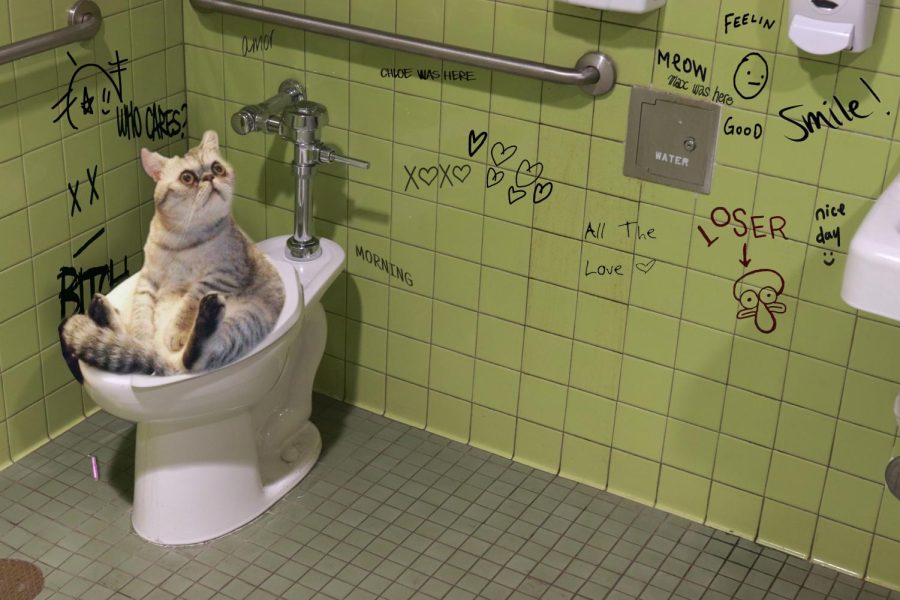Reasons You Should Never Flush Cat Poop Down Your Toilet - Important Information
Reasons You Should Never Flush Cat Poop Down Your Toilet - Important Information
Blog Article
Just how do you actually feel about Don’t flush cat feces down the toilet?

Intro
As feline proprietors, it's vital to bear in mind how we deal with our feline good friends' waste. While it might appear practical to purge feline poop down the toilet, this technique can have harmful consequences for both the atmosphere and human health.
Environmental Impact
Flushing pet cat poop introduces dangerous pathogens and bloodsuckers into the supply of water, presenting a significant danger to aquatic ecological communities. These impurities can negatively influence aquatic life and compromise water top quality.
Health and wellness Risks
In addition to environmental concerns, flushing pet cat waste can also pose health risks to humans. Feline feces might have Toxoplasma gondii, a parasite that can cause toxoplasmosis-- a potentially severe illness, especially for expecting ladies and individuals with weakened immune systems.
Alternatives to Flushing
Fortunately, there are safer and much more responsible methods to throw away pet cat poop. Think about the following options:
1. Scoop and Dispose in Trash
One of the most usual method of getting rid of feline poop is to scoop it right into an eco-friendly bag and toss it in the garbage. Make sure to utilize a specialized trash scoop and get rid of the waste quickly.
2. Usage Biodegradable Litter
Select eco-friendly feline litter made from products such as corn or wheat. These trashes are environmentally friendly and can be securely taken care of in the garbage.
3. Hide in the Yard
If you have a backyard, consider burying pet cat waste in a marked area away from vegetable yards and water resources. Be sure to dig deep sufficient to prevent contamination of groundwater.
4. Install a Pet Waste Disposal System
Purchase a family pet waste disposal system specifically designed for feline waste. These systems use enzymes to break down the waste, reducing odor and ecological effect.
Final thought
Accountable pet possession extends beyond giving food and shelter-- it likewise entails proper waste monitoring. By refraining from flushing cat poop down the bathroom and going with alternative disposal techniques, we can lessen our ecological impact and shield human wellness.
Why Can’t I Flush Cat Poop?
It Spreads a Parasite
Cats are frequently infected with a parasite called toxoplasma gondii. The parasite causes an infection called toxoplasmosis. It is usually harmless to cats. The parasite only uses cat poop as a host for its eggs. Otherwise, the cat’s immune system usually keeps the infection at low enough levels to maintain its own health. But it does not stop the develop of eggs. These eggs are tiny and surprisingly tough. They may survive for a year before they begin to grow. But that’s the problem.
Our wastewater system is not designed to deal with toxoplasmosis eggs. Instead, most eggs will flush from your toilet into sewers and wastewater management plants. After the sewage is treated for many other harmful things in it, it is typically released into local rivers, lakes, or oceans. Here, the toxoplasmosis eggs can find new hosts, including starfish, crabs, otters, and many other wildlife. For many, this is a significant risk to their health. Toxoplasmosis can also end up infecting water sources that are important for agriculture, which means our deer, pigs, and sheep can get infected too.
Is There Risk to Humans?
There can be a risk to human life from flushing cat poop down the toilet. If you do so, the parasites from your cat’s poop can end up in shellfish, game animals, or livestock. If this meat is then served raw or undercooked, the people who eat it can get sick.
In fact, according to the CDC, 40 million people in the United States are infected with toxoplasma gondii. They get it from exposure to infected seafood, or from some kind of cat poop contamination, like drinking from a stream that is contaminated or touching anything that has come into contact with cat poop. That includes just cleaning a cat litter box.
Most people who get infected with these parasites will not develop any symptoms. However, for pregnant women or for those with compromised immune systems, the parasite can cause severe health problems.
How to Handle Cat Poop
The best way to handle cat poop is actually to clean the box more often. The eggs that the parasite sheds will not become active until one to five days after the cat poops. That means that if you clean daily, you’re much less likely to come into direct contact with infectious eggs.
That said, always dispose of cat poop in the garbage and not down the toilet. Wash your hands before and after you clean the litter box, and bring the bag of poop right outside to your garbage bins.
https://trenchlesssolutionsusa.com/why-cant-i-flush-cat-poop/

I have been very drawn to How to Dispose of Cat Poop and Litter Without Plastic Bags and I'm hoping you appreciated the blog entry. Sharing is nice. Helping people is fun. Thank you for your time. Kindly check our website back soon.
Check Us Out Report this page